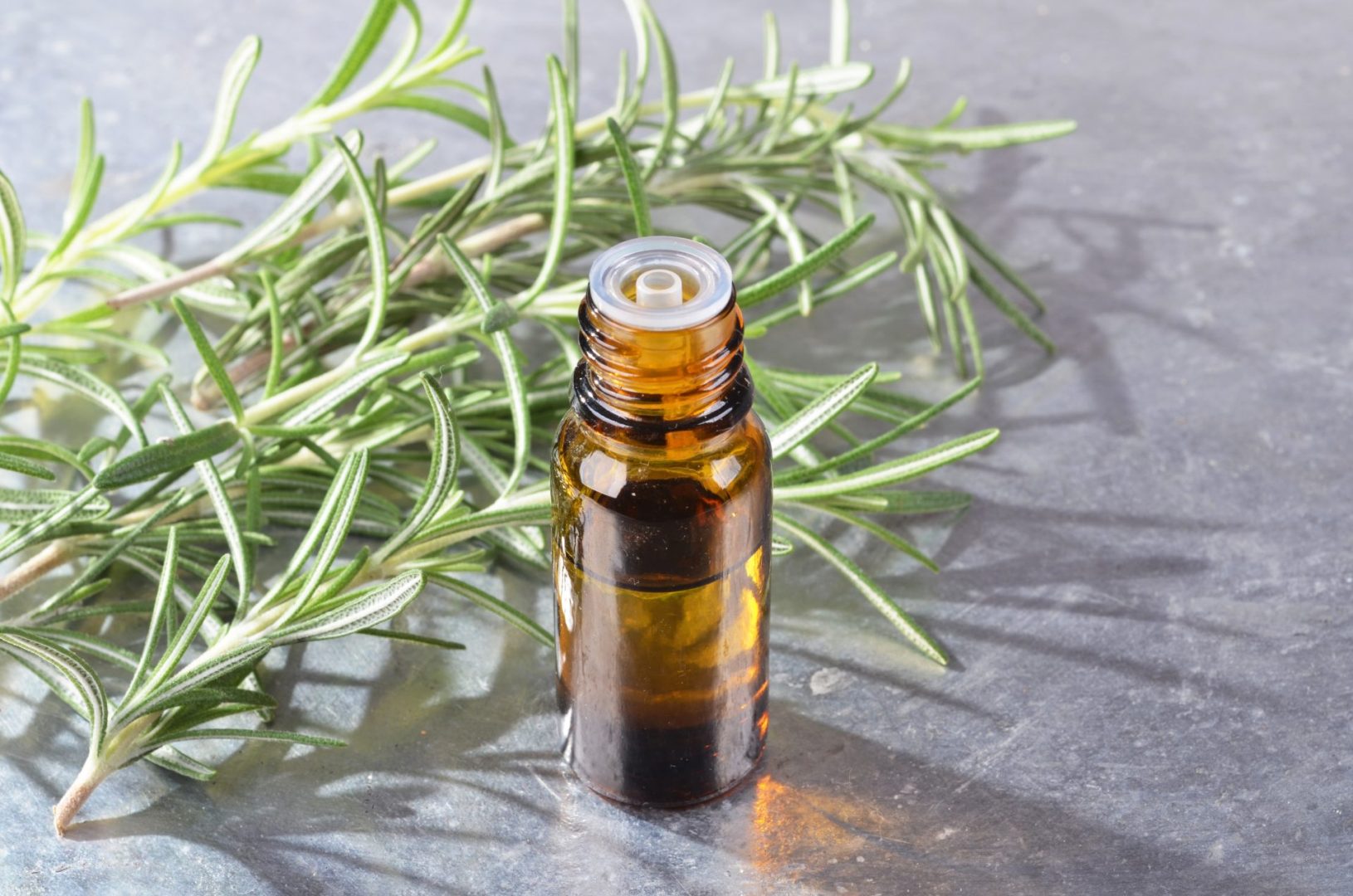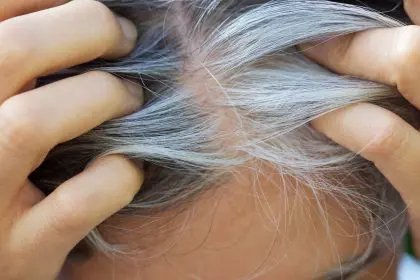The humble rosemary plant sitting in your kitchen windowsill might just be the game-changer your hair has been waiting for. This aromatic herb has quietly become one of the most talked-about natural solutions for hair growth, and for good reason. The essential oil extracted from rosemary leaves contains powerful compounds that can stimulate circulation, strengthen hair follicles, and promote healthier, thicker hair growth.
While the beauty industry continues to flood the market with expensive hair growth serums and treatments, rosemary oil offers an affordable, natural alternative that you can easily incorporate into your existing hair care routine. The best part? You don’t need to be a beauty expert to see results.
Understanding how rosemary oil works for hair growth
Rosemary oil contains several active compounds that make it particularly effective for hair health. The primary component, rosmarinic acid, acts as a natural antioxidant that helps protect hair follicles from damage caused by free radicals. This protection allows follicles to function optimally, creating an environment where healthy hair growth can flourish.
The oil also contains camphor, which increases blood circulation when applied to the scalp. This enhanced circulation delivers more oxygen and nutrients to hair follicles, essentially feeding them the resources they need to produce stronger, healthier hair strands. Additionally, rosemary oil has antimicrobial properties that help maintain a clean, healthy scalp environment free from bacteria and fungal issues that can inhibit hair growth.
Another crucial component is carnosic acid, which has been shown to help repair nerve damage and improve nerve function. Since hair follicles are connected to nerve endings, this property may contribute to better follicle health and improved hair growth cycles.
Method 1: Direct scalp massage with diluted rosemary oil
The most straightforward approach involves creating a simple diluted rosemary oil blend for direct scalp application. This method allows the oil to work directly on your scalp and hair follicles, providing maximum contact time for optimal results.
Start by mixing three to five drops of pure rosemary essential oil with one tablespoon of carrier oil. Coconut oil, jojoba oil, or sweet almond oil work exceptionally well as carriers because they’re gentle on the scalp and have their own hair-nourishing properties. The carrier oil also helps prevent potential skin irritation that can occur with undiluted essential oils.
Apply this mixture to your scalp using gentle circular motions with your fingertips. Focus on areas where you want to encourage growth or where you’ve noticed thinning. Massage for five to ten minutes to ensure the oil penetrates the scalp and stimulates blood flow. Leave the treatment on for at least 30 minutes, though overnight application can provide even better results.
For best results, use this method two to three times per week. Consistency is key with natural hair growth treatments, so establish a regular routine and stick with it for at least three months to see noticeable improvements.
Method 2: Rosemary oil hair mask with nourishing ingredients
Creating a comprehensive hair mask that combines rosemary oil with other hair-healthy ingredients can amplify your results while addressing multiple hair concerns simultaneously. This approach works particularly well for those dealing with dry, damaged hair alongside slow growth.
Combine two tablespoons of coconut oil with one tablespoon of castor oil, known for its hair growth properties. Add five drops of rosemary essential oil and mix thoroughly. For extra nourishment, include one tablespoon of raw honey, which acts as a natural humectant and adds moisture to both hair and scalp.
Apply this mixture from roots to ends, paying special attention to the scalp area. Cover your hair with a shower cap or plastic wrap to create a warm environment that helps the ingredients penetrate more effectively. Leave the mask on for one to two hours before washing with your regular shampoo.
Use this intensive treatment once per week for optimal results. The combination of oils provides deep conditioning while the rosemary oil specifically targets hair growth, creating a comprehensive treatment that addresses both hair health and growth stimulation.
Method 3: Rosemary oil shampoo enhancement
Transform your regular shampoo into a growth-promoting powerhouse by adding rosemary oil directly to your existing products. This method is perfect for busy individuals who want to incorporate rosemary oil benefits without adding extra steps to their routine.
Add 10 to 15 drops of rosemary essential oil to an 8-ounce bottle of sulfate-free shampoo. Shake well before each use to ensure the oil is properly distributed throughout the product. The key is using a gentle, sulfate-free formula that won’t strip your hair of natural oils while allowing the rosemary oil to work effectively.
When washing your hair, focus on massaging the enhanced shampoo into your scalp for at least two minutes. This massage action combined with the rosemary oil creates the perfect environment for stimulating blood circulation and promoting healthy hair growth. The longer contact time allows the beneficial compounds to penetrate the scalp more effectively.
This method provides consistent exposure to rosemary oil benefits every time you wash your hair, making it an excellent option for those who prefer gradual, consistent treatment rather than intensive weekly applications.
Method 4: Rosemary oil and apple cider vinegar rinse
Apple cider vinegar has long been celebrated for its ability to balance scalp pH and remove product buildup that can clog hair follicles. When combined with rosemary oil, this creates a powerful clarifying treatment that promotes optimal scalp health for better hair growth.
Mix one cup of lukewarm water with two tablespoons of raw, unfiltered apple cider vinegar. Add five drops of rosemary essential oil and stir well. The acetic acid in apple cider vinegar helps the rosemary oil penetrate the scalp more effectively while removing any residue that might be blocking hair follicles.
Apply this mixture to clean, damp hair after shampooing. Pour it slowly over your scalp, ensuring even distribution, then massage gently with your fingertips for two minutes. Don’t rinse immediately; instead, allow the mixture to sit for five to ten minutes before rinsing with cool water.
Use this rinse once or twice per week as a scalp-clarifying treatment. The apple cider vinegar helps maintain optimal scalp pH levels while the rosemary oil works to stimulate follicles and promote healthy growth patterns.
Method 5: Overnight rosemary oil treatment
For those seeking maximum results, an overnight treatment provides extended contact time that allows rosemary oil to work continuously while you sleep. This method is particularly effective for addressing stubborn hair growth issues or areas of significant thinning.
Create a lightweight treatment oil by combining one tablespoon of jojoba oil with four drops of rosemary essential oil. Jojoba oil closely mimics your scalp’s natural sebum, making it an ideal overnight carrier that won’t leave your hair greasy or weighed down.
Apply this mixture focusing primarily on the scalp and roots, avoiding the hair lengths to prevent over-conditioning. Gently massage the oil into your scalp for five minutes, then cover your pillow with a towel or use a silk pillowcase to protect your bedding.
In the morning, wash your hair as usual with a gentle shampoo. You may need to shampoo twice to completely remove all oil residue, but the extended treatment time allows for maximum absorption and effectiveness.
Maximizing results with proper technique
Success with rosemary oil hair growth treatments depends largely on proper application technique and consistency. Always perform a patch test before using rosemary oil for the first time, applying a small amount of diluted oil to your inner arm and waiting 24 hours to check for any allergic reactions.
When applying any rosemary oil treatment, use gentle pressure and circular motions to massage the scalp. This massage action is crucial for stimulating blood flow and ensuring the oil penetrates effectively. Avoid aggressive rubbing, which can damage hair follicles and cause breakage.
Temperature can also play a role in effectiveness. Slightly warming your carrier oil before mixing in the rosemary essential oil can help with absorption. However, never heat essential oils directly, as this can damage their beneficial compounds.
Timeline and expectations for results
Natural hair growth treatments require patience and consistent application. Most people begin noticing improvements in hair texture and scalp health within four to six weeks of regular use. Visible hair growth improvements typically become apparent after eight to twelve weeks of consistent treatment.
Keep in mind that everyone’s hair grows at different rates, and factors like genetics, overall health, and existing hair damage can influence how quickly you see results. The key is maintaining a consistent routine and giving the treatment adequate time to work.
Document your progress with photos taken in similar lighting conditions every few weeks. This visual tracking can help you notice gradual improvements that might not be immediately obvious in daily mirror checks.
Rosemary oil offers a natural, affordable approach to supporting healthy hair growth that can easily be incorporated into any hair care routine. Whether you choose direct scalp massage, enhanced shampoos, or intensive overnight treatments, the key to success lies in consistency and proper application technique. With patience and regular use, this powerful herb can help you achieve the thicker, healthier hair you’ve been seeking.
















